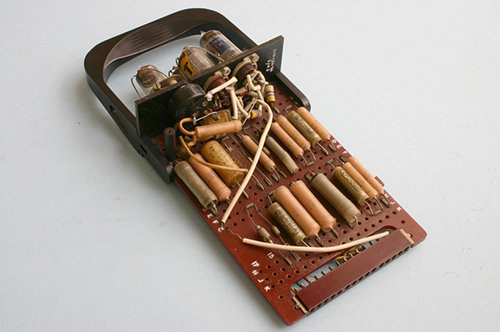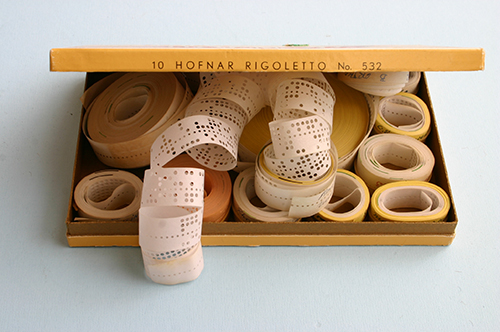Circuit board module of the ZEBRA computer

Take a look at your mobile. Is it a smartphone? In that case, it has a chip, capable of making approximately 2.4 billion calculations per second. Then think of the very first computer that was put into use in the Netherlands in 1958. It could make no more than 500 calculations per second.
This is a circuit board from that very first computer, the ZEBRA, which had been set up at the Mathematical Institute of the University of Groningen. This device had the calculating power of ten to twenty people, though it took just as many to keep it running. Still, it proved a huge advancement in comparison to the calculating machines that preceded the ZEBRA. These literally had to be hand-cranked to function.
The new computer was as big as three wardrobes. Two of them were filled with printing maps. The third contained equipment to provide the rest with electricity. Data was entered through paper tape.

These paper tapes were the first computer data carriers. The location of the holes in the paper represented a letter or digit. A program easily consisted of dozens of metres of tape, which the programmers could read like a book. And whenever a program became literally tangled up, they were at a complete loss.
Every user wrote their own program in those days, rolls of paper tape, stored in cigar boxes. They were exchanged during special meetings.
The University of Groningen still has a reputation to uphold when it comes to powerful computers. In 2005, Groningen installed the Blue Gene supercomputer. It could make 14 trillion calculations per second and thereby was for a short period of time the third most powerful computer in the world. In 2014 it was replaced by the Cobalt, an even faster computer the university had developed together with computer manufacturer Dell.
| Last modified: | 12 October 2022 09.56 a.m. |

